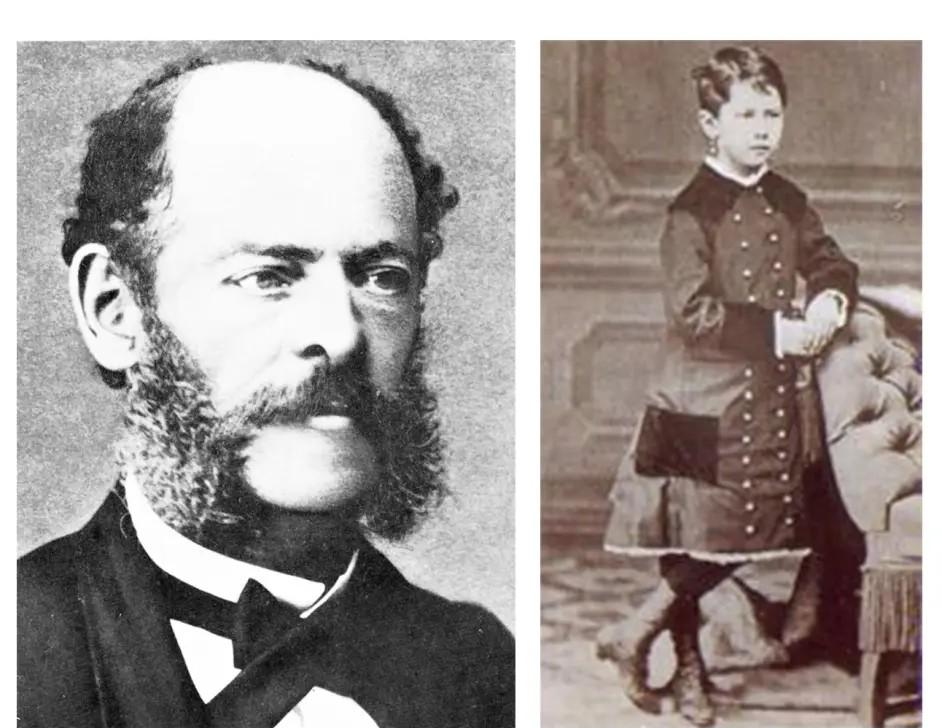The Cave of Altamira, a late Paleolithic cave remains dating back at least 12,000 years, has been found in northern Spain, the first cave remains to be found with prehistoric human frescoes, with many lifelike extinct creatures on the rock walls.

Discoverers of the Altamira Caves, Marcelino Sanz de Sautuola and María de Sautuola
The Altamira Cave was discovered in the small town of Santaliana del Mar, 30 km west of santander, the capital of the autonomous region of Cantabria in northern Spain. The entire cave is 300 meters long and 2 to 6 meters high, derived from the special landform created by the action of rain or groundwater on soluble rocks, causing the interior to meander and twist, and extinct creatures appear on the cave's frescoes.
Bison murals inside the cave
In 1879, amateur archaeologist Marcelino De Santuola and his 8-year-old daughter discovered the frescoes in this cave, which he later excavated with Juan Biranova Pila of the University of Madrid, and in 1880 the discovery was announced, stating that the frescoes belonged to the Paleolithic age.
Altamira Caves
This major discovery was strongly rejected by several French scholars, such as Gabriel de Mortier, who believed that the quality and preservation of the frescoes were too good to believe that prehistoric humans had the means to create such sophisticated paintings, accusing the frescoes of being forged by Santuola.
Frescoes of the Caves of Altamira
With the discovery of other prehistoric murals and studies confirming that the Altamira murals are truly prehistoric relics and changing the established impression of prehistoric humans, Santaola's discovery was finally recognized by the academic community in 1902, but he died as early as 1888.
From 1902 to 1904, subsequent excavations of the Altamira Cave were carried out by the Spanish prehistoric historian Emilio Alcard del Rio; from 1924 to 1925 by the German prehistoric historian and anthropologist Hugo Obermeier; and finally in 1981 by the Spanish archaeologist Joaquín Gonzalez Echegarai, and the cave paintings of the Alta mira Cave were listed as a UNESCO World Heritage Site in 1985.
Pigment grinding plates excavated from the Altamira Caves
The frescoes in the Altamira Caves are derived from two Paleolithic cultures, the "Solut Culture" of 18500 BC and the "Magderin Culture" from 16500 BC to 14000 BC. In 2008, researchers used uranium thorium dating to discover that cave paintings were created for up to 20,000 years, and in 2012 they even found that there were even 35,600 creations.
Altamira Cave Mural "Wounded Bison"
The interior of the cave is supposed to be a habitat for wildlife, and while frescoes can be seen throughout the cave, humans only inhabit the area at the entrance to the cave. The murals are painted with materials such as hematite and charcoal, and through the dilution of pigments, they express the change of color shades and the contrast between light and shade, while using the natural contours on the rock walls to express a three-dimensional visual effect, in which you can see horses, deer, wild boars and other creatures, as well as extinct Siberian bison.
Northern Spain also has many cave remains with Paleolithic art, but no remains as rich as the Altamira Cave have been preserved, probably 13,000 years ago, when the entrance was closed by a rockfall, making the Alta Mira Cave lucky to be preserved to this day.
In the 1960s and 1970s, the murals of the Altamira Cave were completely closed to the public in 1977 due to damage from carbon dioxide accompanied by a large number of tourists. In 1982, it was opened in a way that restricted the entry of a small number of tourists, and it took 3 years from reservation to entry. The cave was closed again in 2002 and reopened to a limited extent in January 2014.
Ancient pigments excavated from the Caves of Altamira
In 2001, the famous Spanish artist Manuel Franco and his companions built a replica and museum near the cave, recreating the cave and the art in it. Institutions such as the National Archaeological Museum of Spain in Madrid and the Deutsches Museum in Munich, Germany, also have replicas of the Altamira Caves.
The Cave of Altamira became one of the 12 greatest treasures in Spain in 2007. In 2016, British director Hugh Hudson released a film about the discovery of the Altamira Cave, "Altamira". The bison murals in the caves became an iconic motif, and the Cantabria Autonomous Region Government used the image it designed to promote sightseeing, which was also used by cartoons, poetry covers, and brand logos.